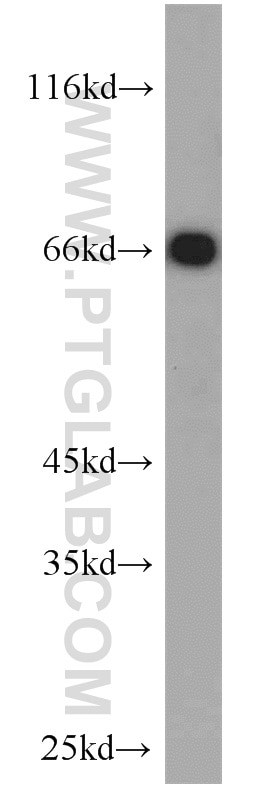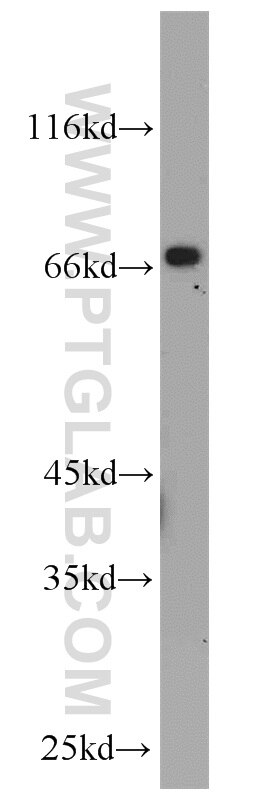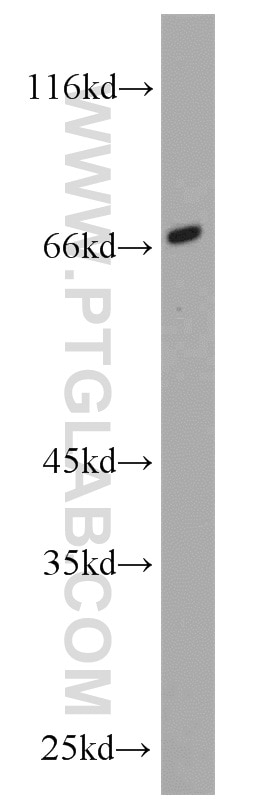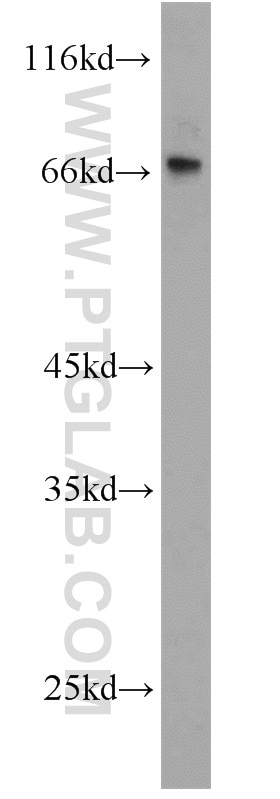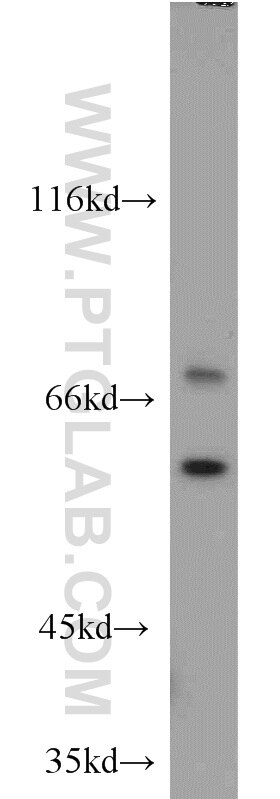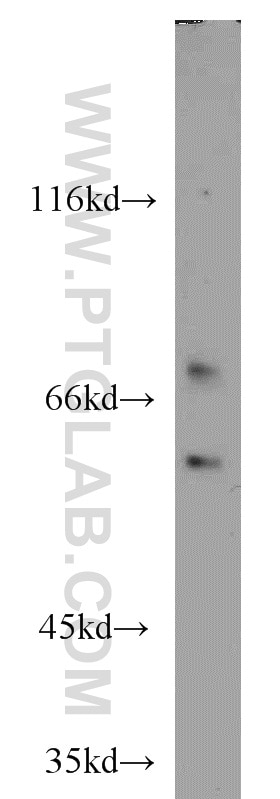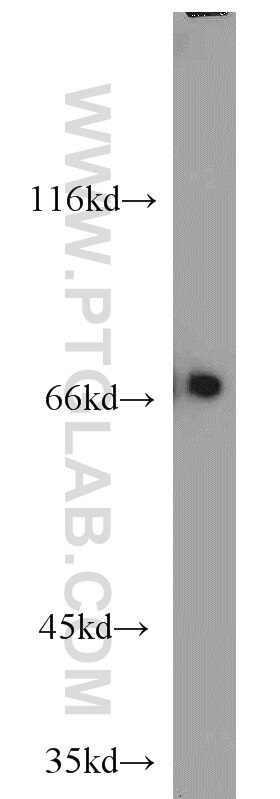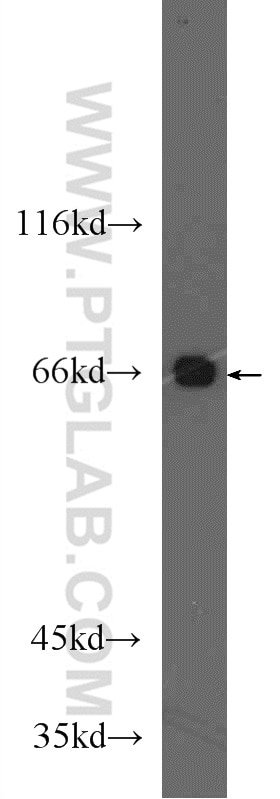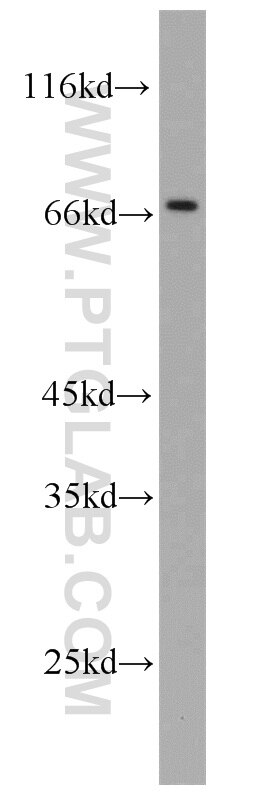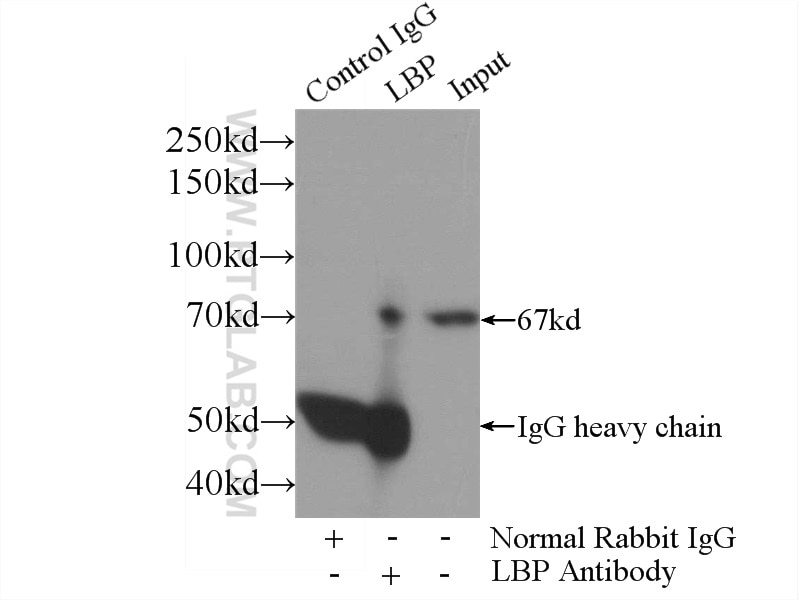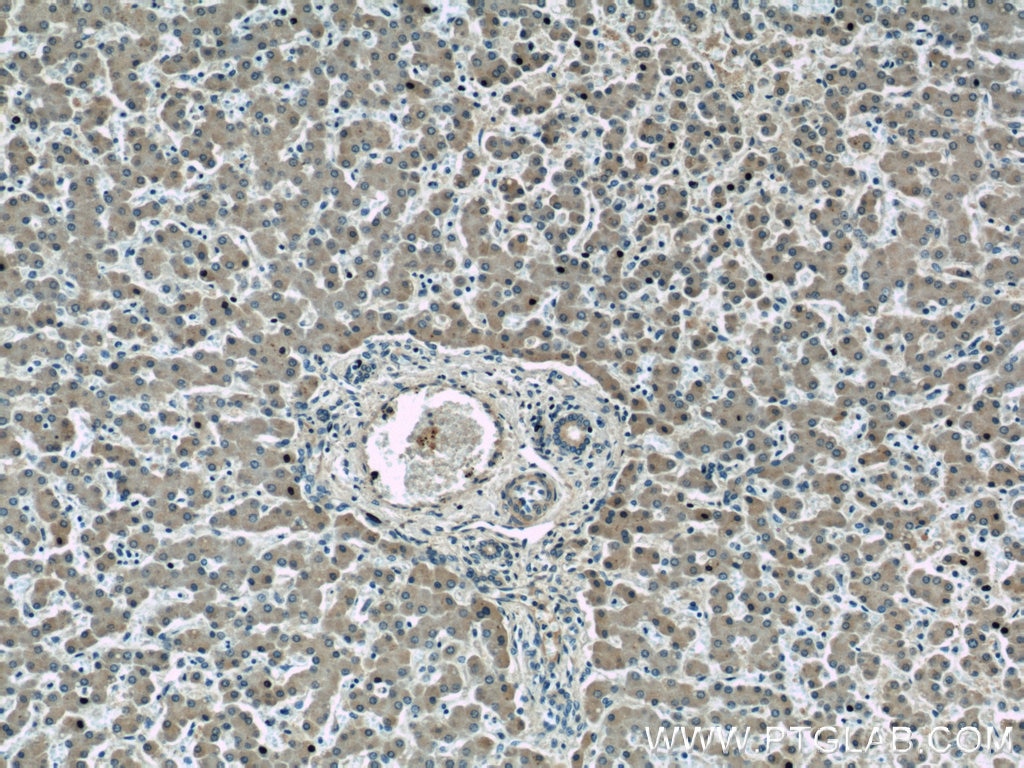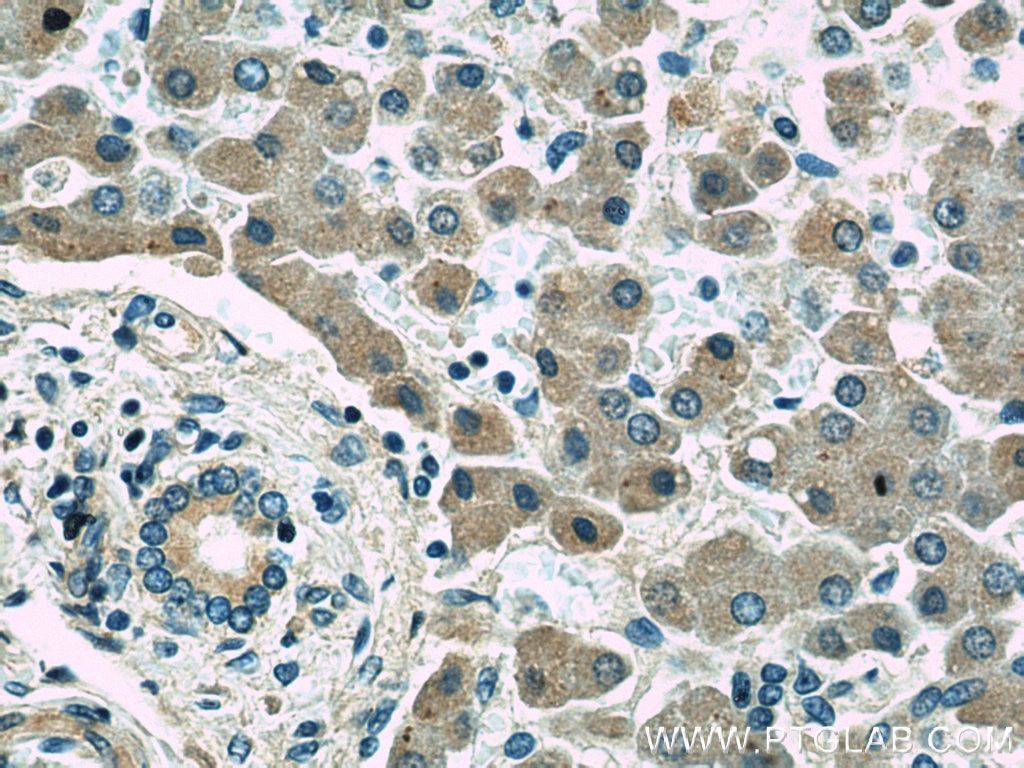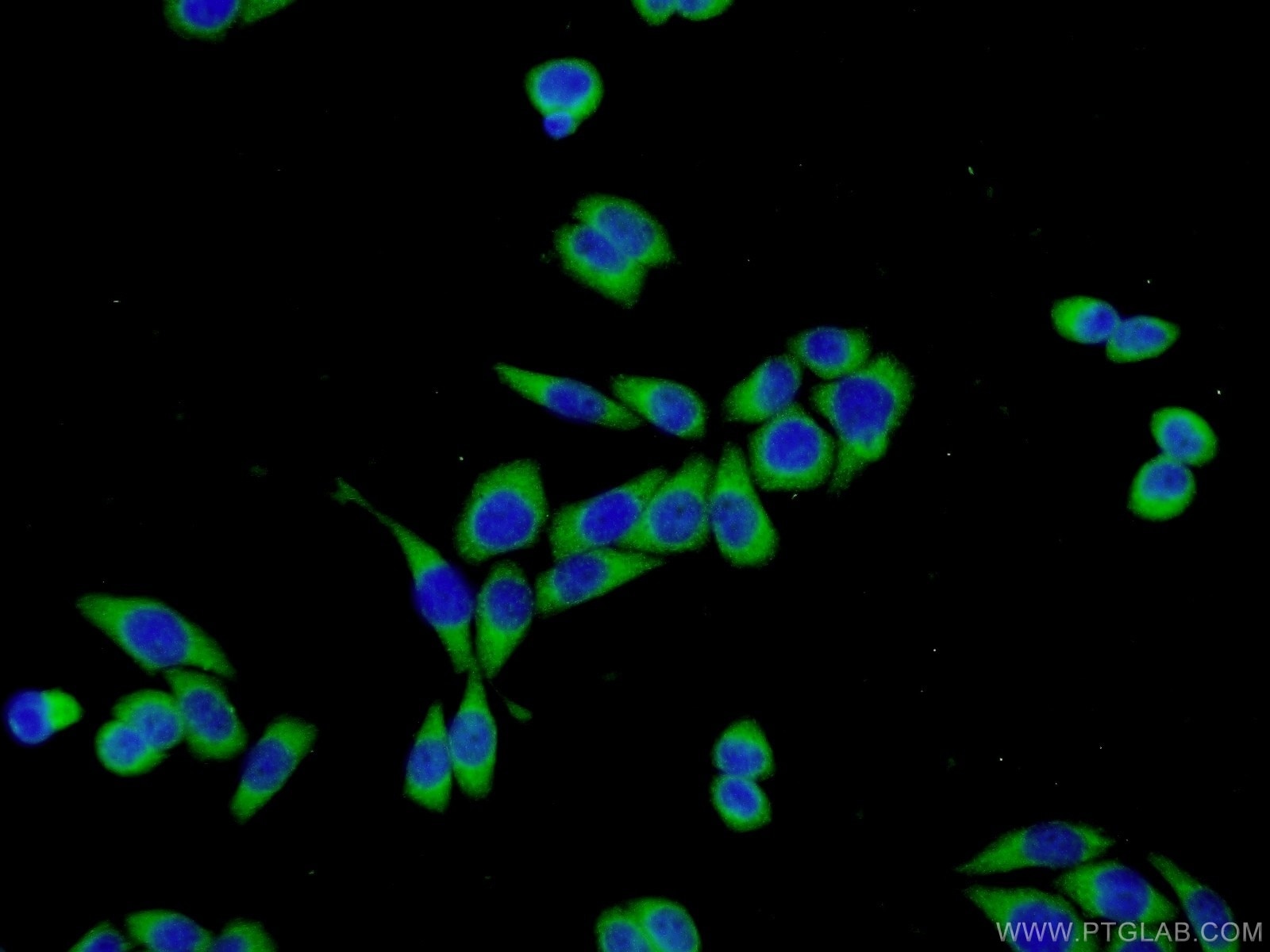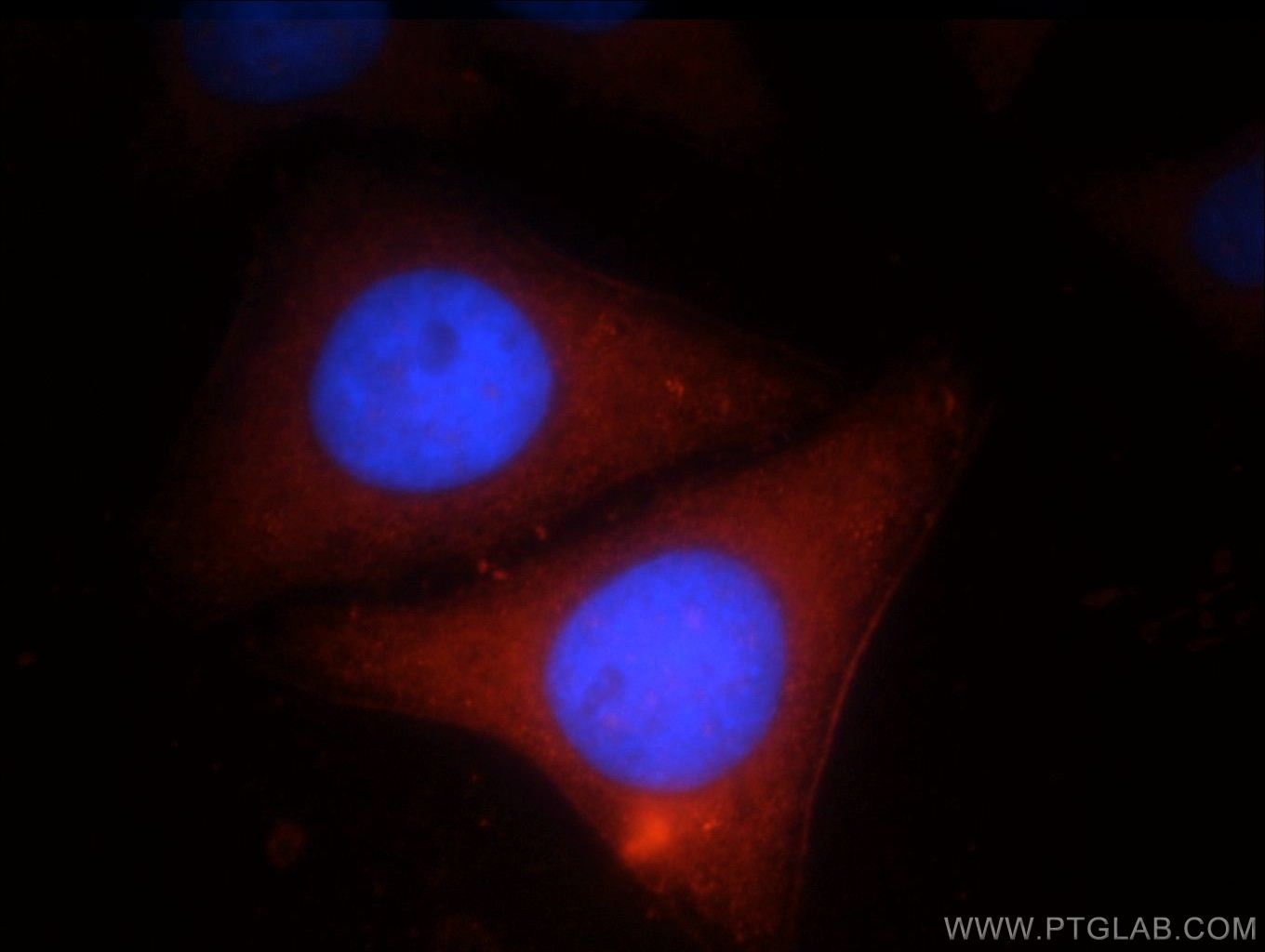Anticorps Polyclonal de lapin anti-LBP
LBP Polyclonal Antibody for WB, IHC, IF/ICC, IP, ELISA
Hôte / Isotype
Lapin / IgG
Réactivité testée
Humain, rat, souris
Applications
WB, IHC, IF/ICC, IP, ELISA
Conjugaison
Non conjugué
N° de cat : 11836-1-AP
Synonymes
Galerie de données de validation
Applications testées
| Résultats positifs en WB | tissu hépatique de souris, cellules A431, cellules A549, cellules HeLa, cellules Jurkat, cellules L02, tissu hépatique de rat |
| Résultats positifs en IP | tissu hépatique de souris |
| Résultats positifs en IHC | tissu hépatique humain, il est suggéré de démasquer l'antigène avec un tampon de TE buffer pH 9.0; (*) À défaut, 'le démasquage de l'antigène peut être 'effectué avec un tampon citrate pH 6,0. |
| Résultats positifs en IF/ICC | cellules L02, cellules HepG2 |
Dilution recommandée
| Application | Dilution |
|---|---|
| Western Blot (WB) | WB : 1:500-1:2000 |
| Immunoprécipitation (IP) | IP : 0.5-4.0 ug for 1.0-3.0 mg of total protein lysate |
| Immunohistochimie (IHC) | IHC : 1:50-1:500 |
| Immunofluorescence (IF)/ICC | IF/ICC : 1:20-1:200 |
| It is recommended that this reagent should be titrated in each testing system to obtain optimal results. | |
| Sample-dependent, check data in validation data gallery | |
Applications publiées
| WB | See 1 publications below |
| IHC | See 1 publications below |
Informations sur le produit
11836-1-AP cible LBP dans les applications de WB, IHC, IF/ICC, IP, ELISA et montre une réactivité avec des échantillons Humain, rat, souris
| Réactivité | Humain, rat, souris |
| Réactivité citée | rat, Humain |
| Hôte / Isotype | Lapin / IgG |
| Clonalité | Polyclonal |
| Type | Anticorps |
| Immunogène | LBP Protéine recombinante Ag2431 |
| Nom complet | lipopolysaccharide binding protein |
| Masse moléculaire calculée | 481 aa, 53 kDa |
| Poids moléculaire observé | 63-67 kDa |
| Numéro d’acquisition GenBank | BC022256 |
| Symbole du gène | LBP |
| Identification du gène (NCBI) | 3929 |
| Conjugaison | Non conjugué |
| Forme | Liquide |
| Méthode de purification | Purification par affinité contre l'antigène |
| Tampon de stockage | PBS with 0.02% sodium azide and 50% glycerol |
| Conditions de stockage | Stocker à -20°C. Stable pendant un an après l'expédition. L'aliquotage n'est pas nécessaire pour le stockage à -20oC Les 20ul contiennent 0,1% de BSA. |
Informations générales
LBP belongs to the BPI/LBP/Plunc superfamily and BPI/LBP family. It binds to the lipid A moiety of bacterial lipopolysaccharides (LPS) which is a glycolipid present in the outer membrane of all Gram-negative bacteria. The LBP/LPS complex seems to interact with the CD14 receptor. LBP is involved in the acute-phase immunologic response to gram-negative bacterial infections. In many tissue/cells, we get 53-60 kDa and 63-67 kDa(Glycosylation form).
Protocole
| Product Specific Protocols | |
|---|---|
| WB protocol for LBP antibody 11836-1-AP | Download protocol |
| IHC protocol for LBP antibody 11836-1-AP | Download protocol |
| IF protocol for LBP antibody 11836-1-AP | Download protocol |
| IP protocol for LBP antibody 11836-1-AP | Download protocol |
| Standard Protocols | |
|---|---|
| Click here to view our Standard Protocols |
Publications
| Species | Application | Title |
|---|---|---|
J Neurosurg Association of decreased levels of lipopolysaccharide-binding protein with OKN-007-induced regression of tumor growth in an F98 rat glioma model. | ||
Cancer Sci Circulating exosomes contain protein biomarkers of metastatic non-small-cell lung cancer. | ||
J Biomed Mater Res A The characteristic regulation of gene expression Lbp and Sod3 in peri-implant connective tissue of rats. |
